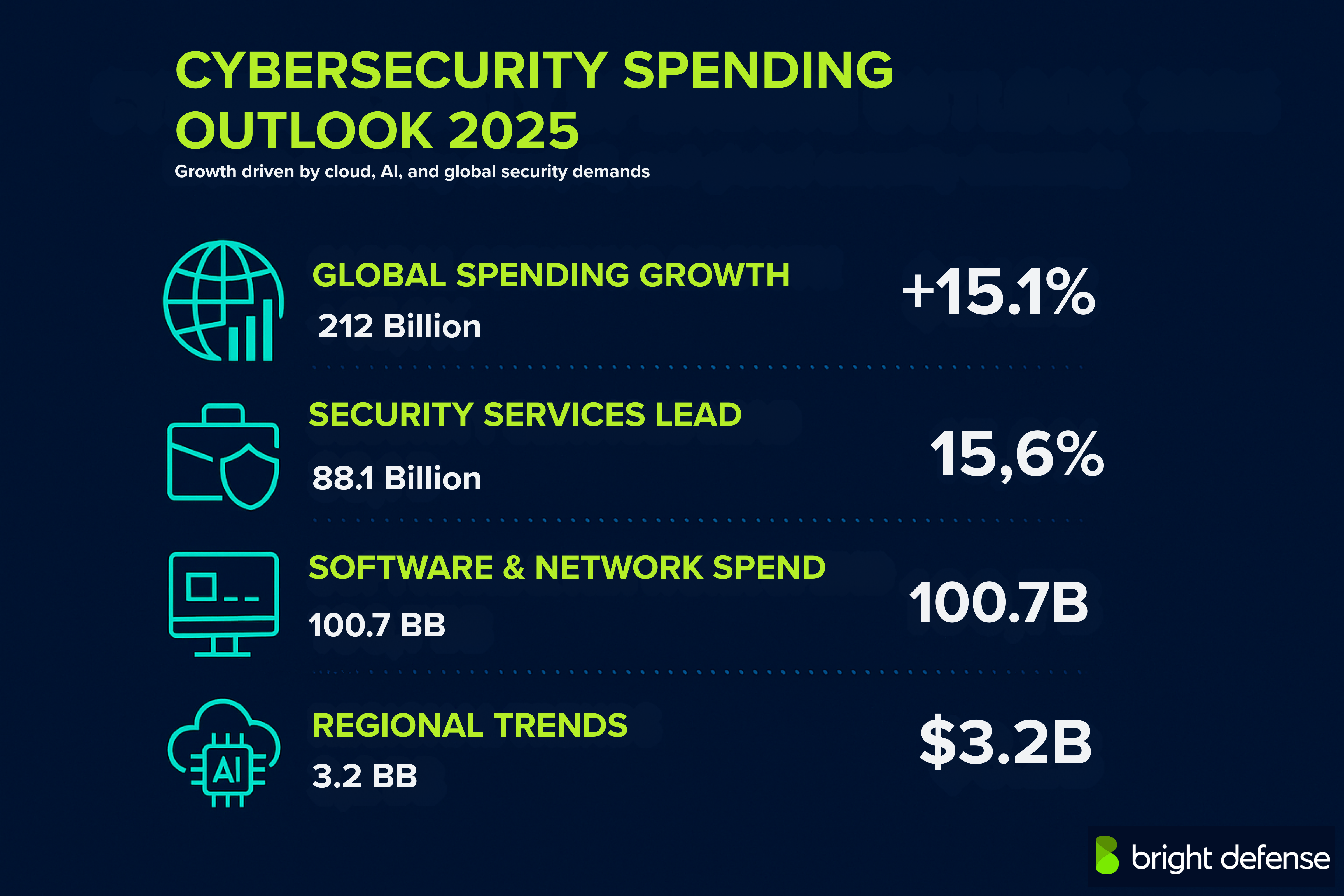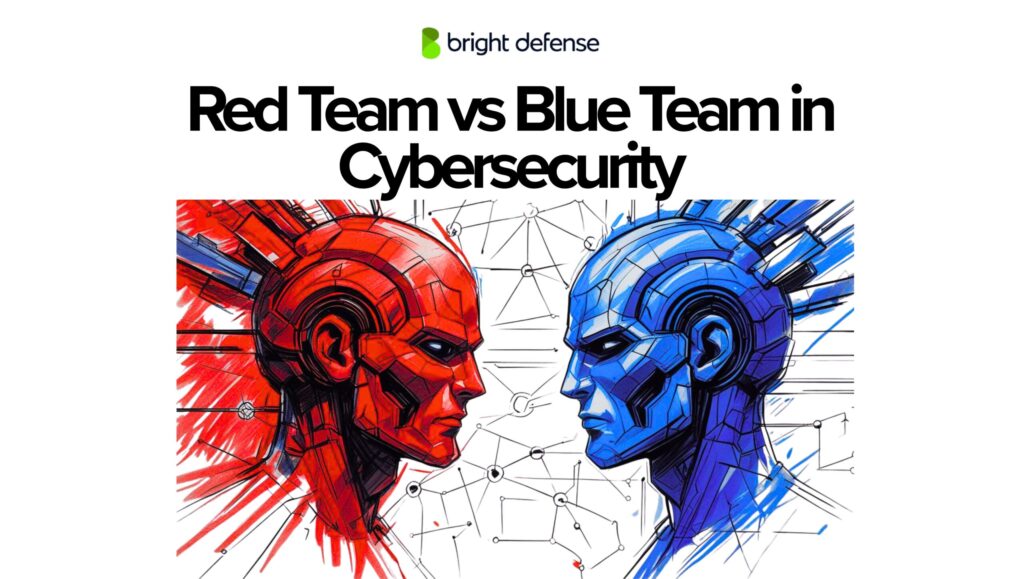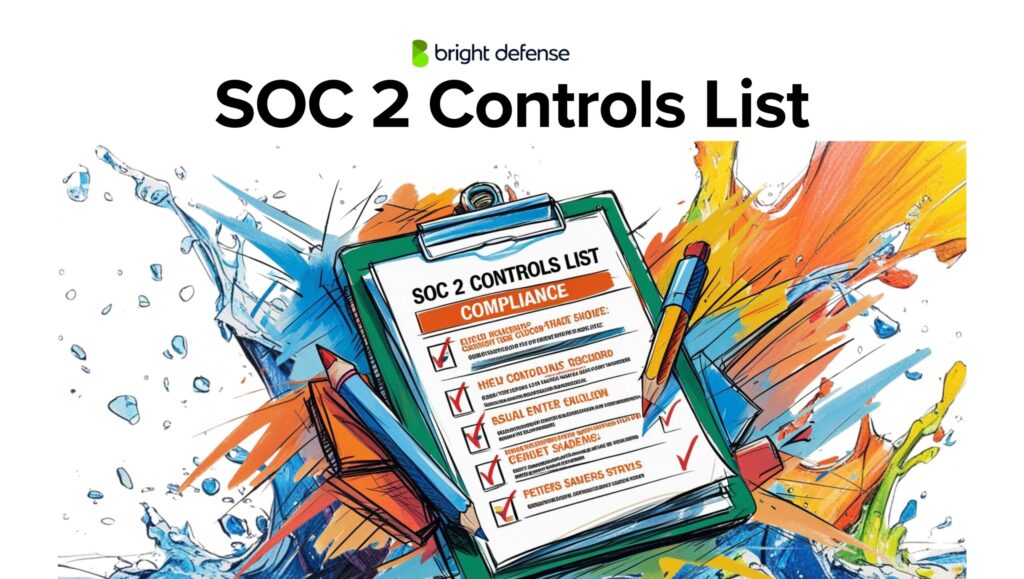
Tim Mektrakarn - CISSP | CISA | ISO 27001
June 28, 2025
Budgeting for Cybersecurity in 2025
As organizations plan for 2025, cybersecurity remains a top budget priority. Rising threats and growing digital operations are pushing spending upward. Executives are now more aware of the risks, and budgets are following suit.
Global cybersecurity spending is expected to hit $212 billion in 2025, a 15% jump from the year before. This increase reflects the growing complexity of cyberattacks and the heavy dependence on digital systems.
Cybercrime is also getting more expensive. Global damages are projected to reach $10.5 trillion a year by 2025. A case in point: the £300 million attack on Marks & Spencer shows how costly breaches can be.
Sectors like banking, healthcare, and telecom are responding with larger security budgets. HSBC, for example, reports cybersecurity as its biggest operating cost, spending hundreds of millions of pounds annually.
The rising threat level and steep financial stakes are pushing companies to raise their cybersecurity budgets in 2025.
Key Takeaways
- Cybersecurity spending will reach $212B in 2025, up 15%.
- Cybercrime damages expected to hit $10.5T annually.
- Banking, healthcare, telecom are leading spending increases.
- Security services and cloud/AI protections are top growth areas.
- Tech and healthcare allocate the most (13.3% of IT budgets); retail the least (6%).
- Budget guidance by size:
- Small: 4–10%
- Medium: 8–15%
- Large: 10–20%
- Top spending drivers: AI threats, talent shortage, regulations, cloud use.
- Core areas: risk assessment, tools, staff, compliance, incident response.
- Human error (phishing, social engineering) remains a key risk.
- Strategic budgeting balances risk and compliance priorities.
Cybersecurity Budget Trends in 2025
Cybersecurity budgeting in 2025 is influenced by several key trends:
1. Global Spending Growth
Gartner forecasts that worldwide end-user spending on information security will reach $212 billion in 2025, marking a 15.1% increase from 2024. This growth is driven by the heightened threat environment, the shift to cloud computing, and a shortage of skilled cybersecurity professionals.
2. Security Services Expansion
Spending on security services, including consulting, professional, and managed services, is anticipated to experience the fastest growth, rising by 15.6% to reach $88.1 billion in 2025. This surge reflects the global cybersecurity skills shortage and the growing need for managed security services, security consulting, and threat intelligence.
3. Software and Network Security Investments
Expenditure on security software is expected to rise by 15.1% in 2025, reaching $100.7 billion. This growth can be attributed to the increasing demand for solutions like endpoint security, network security, and cloud security tools. Additionally, the network security market is projected to reach $24.8 billion in 2025, representing a growth of 13.1%.
4. Regional Growth Variations
Emerging markets are projected to experience higher growth rates in information security spending. For instance, in the Middle East and North Africa (MENA) region, end-user spending on information security is forecasted to total $3.2 billion in 2025, marking a 14% year-on-year increase.
5. Cloud Security and AI Integration
The adoption of cloud services and generative AI (GenAI) technologies is prompting organizations to invest more in security solutions. Gartner predicts that the combined market for cloud access security brokers (CASB) and cloud workload protection platforms (CWPP) will reach $8.7 billion in 2025, up from $6.7 billion in 2024.
These trends show the evolving priorities in cybersecurity budgeting for 2025, highlighting the need for organizations to adapt to emerging threats and technological advancements.

Budget Allocations by Industry
In 2025, industries are allocating varying portions of their IT budgets to cybersecurity, reflecting sector-specific priorities and risk exposures:
- Technology and Healthcare: Both sectors allocate approximately 13.3% of their IT budgets to cybersecurity, driven by the need to protect sensitive data and maintain system integrity.
- Business Services: Allocates around 13.2%, emphasizing the importance of securing client data and ensuring service continuity.
- Consumer Goods and Services: Dedicates about 9.7% to cybersecurity, focusing on protecting customer information and supply chain systems.
- Financial Services: Allocates approximately 9.6%, reflecting the sector’s focus on safeguarding financial data and complying with regulatory requirements.
- Manufacturing: Invests around 6.1%, aiming to protect operational technologies and intellectual property
- Retail: Allocates about 6.0%, focusing on securing transaction data and customer information.
These allocations indicate that sectors handling sensitive data or critical infrastructure tend to invest a higher percentage of their IT budgets in cybersecurity to address their unique challenges and regulatory obligations.
Components to Consider in Cybersecurity Budgeting
When planning a cybersecurity budget for 2025, organizations should consider several key components to address evolving threats and regulatory requirements.

1. Risk Assessment and Management
Conducting a thorough risk assessment helps identify vulnerabilities and prioritize security investments. This process involves evaluating potential threats, assessing the likelihood of incidents, and estimating potential impacts. By understanding these factors, organizations can allocate resources effectively to mitigate risks.
2. Security Tools and Technologies
Investing in appropriate security tools is essential. This includes firewalls, intrusion detection and prevention systems, antivirus software, encryption solutions, and multi-factor authentication mechanisms. These tools help protect against unauthorized access and data breaches.
3. Personnel and Training
Allocating budget for skilled cybersecurity personnel is critical. This encompasses hiring security analysts, engineers, and compliance officers. Additionally, ongoing training programs ensure that staff stay updated on the latest threats and best practices.
4. Compliance and Governance
Ensuring compliance with industry regulations and standards, such as GDPR, HIPAA, or ISO/IEC 27001, is a vital component. Budgeting for compliance includes costs related to audits, policy development, and implementing necessary controls.
5. Incident Response and Recovery
Preparing for potential security incidents involves developing and maintaining an incident response plan. Budget considerations here include costs for response tools, forensic investigations, and business continuity planning to minimize downtime during incidents.
6. Third-Party Risk Management
Managing risks associated with third-party vendors and partners is increasingly important. This involves assessing the security posture of external entities and ensuring they adhere to your organization’s security standards.
Key Drivers of Increased Cybersecurity Spending
In 2025, several factors are contributing to increased cybersecurity spending across industries:
1. Generative AI Adoption
The integration of generative AI (GenAI) into business operations has introduced new security challenges. Cybercriminals are leveraging GenAI to craft more convincing phishing emails and automate attacks, necessitating enhanced security measures. Gartner predicts that 17% of cyberattacks will involve GenAI by 2027, prompting organizations to invest in advanced security solutions to counter these threats.
2. Cybersecurity Talent Shortage
The global shortage of skilled cybersecurity professionals is driving organizations to allocate more funds toward security services. This includes investments in managed security services, consulting, and training programs to compensate for internal skill gaps. The demand for cybersecurity expertise continues to outpace supply, making it a critical area of investment.
3. Escalating Cyber Threats
The frequency and sophistication of cyberattacks are on the rise. High-profile incidents, such as the £300 million cyberattack on Marks & Spencer, highlight the substantial financial and reputational risks organizations face. These events underscore the necessity for increased cybersecurity budgets to bolster defenses and response capabilities.
4. Regulatory Compliance Requirements
Governments worldwide are implementing stricter cybersecurity regulations. For instance, the UK’s proposed Cyber Security and Resilience Bill aims to enforce more rigorous security standards across various sectors. Compliance with such regulations requires organizations to invest in updated security infrastructure and practices.
5. Cloud Infrastructure Expansion
The shift toward cloud-based services has expanded the attack surface for many organizations. Securing cloud environments necessitates investments in cloud-native security solutions, such as cloud access security brokers (CASBs) and cloud workload protection platforms (CWPPs). Gartner forecasts that the combined market for CASBs and CWPPs will reach $8.7 billion in 2025.
These factors collectively drive the upward trend in cybersecurity spending, as organizations seek to protect their assets and maintain compliance in an increasingly complex digital landscape.
Sophisticated Supply Chain Attacks
Another significant threat that has gained prominence is supply chain attacks. Cybercriminals are exploiting vulnerabilities in the interconnected networks of suppliers and partners to gain access to a wider range of targets. This approach allows attackers to bypass the direct defenses of a large organization by targeting less secure elements in the supply chain. The far-reaching consequences of these attacks can lead to widespread disruption and compromise of multiple entities simultaneously.

Key Investment Areas
In terms of key investment areas, several essential cybersecurity solutions and technologies should be considered for inclusion in the 2024 budget:
- Endpoint Protection: Investing in next-generation antivirus and Endpoint Detection and Response (EDR) / Managed Detection and Response (MDR) solutions is crucial. These tools provide enhanced protection against advanced malware and persistent threats, and they are critical in a landscape where remote work and mobile device usage are prevalent.
- Network Security: Implementing robust firewalls, intrusion detection/prevention systems (IDS/IPS), and secure web gateways is essential for safeguarding network integrity. These tools help prevent unauthorized access and monitor network traffic for signs of malicious activity.
- Identity and Access Management (IAM): Deploying multi-factor authentication (MFA) and privileged access management (PAM) systems enhances security by ensuring that only authorized individuals have access to sensitive systems and data.
- Security Information and Event Management (SIEM): Investing in SIEM technology allows for centralized log collection and analysis, which is vital for effective threat detection and response.
- Security Awareness Training: Regularly educating employees on cybersecurity best practices is a cost-effective way to bolster an organization’s security posture. Human error remains a significant threat, and informed employees are a vital line of defense.
- Continuous Compliance Programs: Having a blueprint on what your security journey is headed towards, achieving third party audited certification and performing mini audits each month is all part of a strong continuous compliance program.
- Cyber Liability Insurance: Cybersecurity insurance is designed to mitigate the losses from a variety of cyber incidents, including data breaches, business interruption, and network damage. This type of insurance can cover a range of expenses, such as legal fees, recovery costs, and even ransom payments in the case of ransomware attacks.
Additional Budget Considerations
- Leveraging Open-Source Solutions: Many robust open-source security tools can provide significant protection without the hefty price tag of commercial products.
- Implementing a Layered Security Approach: A defense-in-depth strategy ensures that if one security layer fails, others are in place to thwart an attack.
- Utilizing Cloud-Based Security Services: These services often provide scalable and flexible security solutions that can be more cost-effective than traditional on-premises options.
- Budget for Recovery: Too often, we focus on preventive controls which leaves little for more robust recovery tools such as immutable storage and additional backup copies replicated to a different region.
- Get a Crypto Wallet: Preparing for the worst will help save time, if you need to pay a ransom, it’s best to have the process ready to go. As the price of BitCoin continues to rise, it might even be an investment that will generate a decent return.

Advanced Security Technologies
Another critical area of investment is in advanced security technologies, particularly those leveraging artificial intelligence (AI) and machine learning. These technologies have become indispensable in the fight against sophisticated cyber threats. AI and machine learning can analyze vast amounts of data to identify patterns and detect anomalies that may indicate a security breach. This capability is crucial in preempting attacks and responding to them in real-time. AI-driven security solutions can automate complex tasks such as threat detection, network analysis, and incident response, allowing cybersecurity teams to focus on more strategic activities. However, it’s essential to continuously update and train these systems to adapt to new and evolving threats.
Compliance and Regulatory
Compliance and regulatory requirements represent another key investment area. With the increasing number of data protection and privacy regulations worldwide, such as GDPR in Europe and various state-level laws in the United States, compliance has become a significant concern for businesses. Non-compliance can lead to hefty fines and legal consequences, not to mention reputational damage. Investment in this area involves ensuring that cybersecurity policies and procedures are up-to-date with current regulations. It also means implementing tools and systems that can help in monitoring compliance and generating reports for regulatory bodies. This investment is not only about avoiding penalties but also about building trust with customers and partners by demonstrating a commitment to protecting sensitive information.
Building a cybersecurity budget in 2024 is about striking the right balance between risk management, compliance, technological advancements, and cost-effectiveness. By carefully assessing risks, prioritizing investments, and employing strategic, cost-effective solutions, organizations can develop a cybersecurity budget that not only protects their digital assets but also supports their overall business objectives.
Making the Case for Cybersecurity Investment
Advocating for substantial investment in cybersecurity is crucial and even more so as we head in 2024. A compelling argument for this investment begins with quantifying the cost of cyberattacks. Data on the financial impact of data breaches and downtime paints a stark picture of the potential risks involved. Recent studies and industry reports often cite staggering figures, highlighting not only the direct costs associated with incidents like ransom payments, data recovery, and system repairs, but also the indirect costs such as legal fees, regulatory fines, reputational damage, and loss of customer trust.
The Biggest Hacks of 2023
The MGM hack has cost them over $110M because they refused to pay the ransom and opted to recovery themselves. Caesars Entertainment was hit by the same group, Scatter Spider but Caesars negotiated the ransom down from $30M to $15M suffering only 10 days of losses. IAM provider Okta suffered a major cybersecurity attack through their support system effecting major customers like BeyondTrust, Cloudflare and 1Password.
Strategic Alignment is Crucial
Aligning cybersecurity with business goals is another critical aspect of making the case for investment. Cybersecurity is not just a technical issue; it’s a business enabler. Effective cybersecurity strategies contribute directly to business continuity, ensuring that operations are not disrupted by cyber incidents. They also play a key role in maintaining operational efficiency, preventing downtime and the ensuing loss of productivity. Additionally, in an age where brand reputation is increasingly tied to data stewardship, robust cybersecurity measures are essential in building and maintaining customer trust and loyalty. Demonstrating these alignments can help stakeholders see cybersecurity not as a cost center but as a vital component of the business’s success and growth.
Communicating with Executives
When it comes to securing executive buy-in, effective communication is key. One effective strategy is to present cybersecurity issues and solutions in terms of business language and outcomes, rather than technical jargon. This involves framing discussions around risk management, business impact, and competitive advantage. It’s also beneficial to present a clear, concise plan that outlines the specific cybersecurity measures proposed, their costs, and their projected impact on reducing risk and enhancing business operations. Using case studies or examples from similar organizations can also be persuasive, offering tangible evidence of the benefits of investment in cybersecurity.

Executive and Board Buy-In is Required
Moreover, it’s important to engage with executives regularly, not just during annual budget discussions. Keeping leadership informed about the evolving threat landscape, as well as ongoing cybersecurity efforts and their outcomes, can help maintain cybersecurity as a priority in their minds. This continuous dialogue ensures that decision-makers understand the dynamic nature of cyber threats and the necessity of ongoing investment to safeguard the organization.
Conclusion
Investing in cybersecurity tools and technologies is crucial, but remember, the human aspect is equally important. Training and awareness programs for employees are essential in creating a security-conscious culture within your organization. Also, staying informed about compliance and regulatory requirements in your region or industry is crucial to ensure that your cybersecurity measures meet legal standards.
As you plan your 2024 budget, I encourage you to prioritize cybersecurity. Assess your current cybersecurity posture, identify gaps, and allocate resources to areas that will offer the most significant benefit in terms of risk reduction and business continuity. Consider cybersecurity as an integral part of your business strategy, not just a technical requirement. The investment you make today in cybersecurity will not only protect your organization from immediate threats but also lay a strong foundation for future growth and resilience.
By embracing proactive cybersecurity planning and budgeting, you can ensure that your organization is well-equipped to navigate the complexities of the digital era. Take action now, prioritize cybersecurity in your budget, and commit to a path of continuous improvement and vigilance in this critical field.
About Bright Defense
Bright Defense offers various Continuous Compliance services along with implementation of compliance automation platform, Drata. We provide you automated evidence collection and continuous monitoring of key compliance tests with integrations to all major public cloud providers, identity providers, HRIS systems, Mobile Device Management platforms and many more. You can always start off with a cybersecurity assessment to see where the gaps are and we can help you develop your cybersecurity budget for 2024.
FAQ on Budgeting for Cybersecurity in 2024
1. Why is cybersecurity budgeting important in 2024?
Cybersecurity budgeting is crucial in 2024 due to the escalating number and sophistication of cyber threats. Proper budgeting ensures that adequate resources are allocated to protect against data breaches, ransomware attacks, and other cyber threats, which are increasingly costly and damaging.
2. How should an organization start its cybersecurity budgeting process?
Begin by conducting a thorough cybersecurity risk assessment to identify vulnerabilities and potential threats. This assessment should inform your budgeting decisions, helping you prioritize investments in areas of greatest need.
3. What key areas should a cybersecurity budget cover?
Key areas include personnel training and awareness, advanced security technologies like AI and machine learning, compliance with regulatory requirements, endpoint protection, network security, identity and access management (IAM), and security information and event management (SIEM) systems.
4. How much should an organization budget for cybersecurity?
There’s no one-size-fits-all answer, as it depends on various factors such as the organization’s size, industry, and risk profile. However, a general guideline is to allocate a certain percentage of your IT budget to cybersecurity, with recommendations often ranging from 6% to 14%.
5. Is cybersecurity insurance worth including in the budget?
Yes, cybersecurity insurance can be a valuable part of your cybersecurity strategy, providing financial protection against losses from cyber incidents. It’s important to carefully evaluate policies to ensure they meet your organization’s specific needs.
6. What are some cost-effective cybersecurity strategies?
Cost-effective strategies include leveraging open-source security tools, implementing a layered security approach, using cloud-based security services, and prioritizing preventative measures over incident response.
7. How can cyber-risk quantification impact cybersecurity budgeting?
Cyber-risk quantification helps organizations understand the potential financial impact of cyber threats in monetary terms. This approach aids in making data-driven budgeting decisions, ensuring resources are allocated to areas with the highest financial risk.
8. Should small businesses approach cybersecurity budgeting differently?
Small businesses often have limited resources, so their approach should focus on the most cost-effective strategies. They should prioritize foundational security measures like basic network security, employee training, and endpoint protection.
9. How often should cybersecurity budgets be reviewed?
Cybersecurity budgets should be reviewed at least annually, but it’s wise to revisit them more frequently to adapt to the evolving cyber threat landscape and emerging technological solutions.
10. Can compliance requirements affect cybersecurity budgeting?
Yes, compliance with regulations like GDPR or HIPAA can have significant implications for your cybersecurity budget. Non-compliance can result in hefty fines, so it’s crucial to allocate resources towards meeting these regulatory requirements.
Get In Touch



